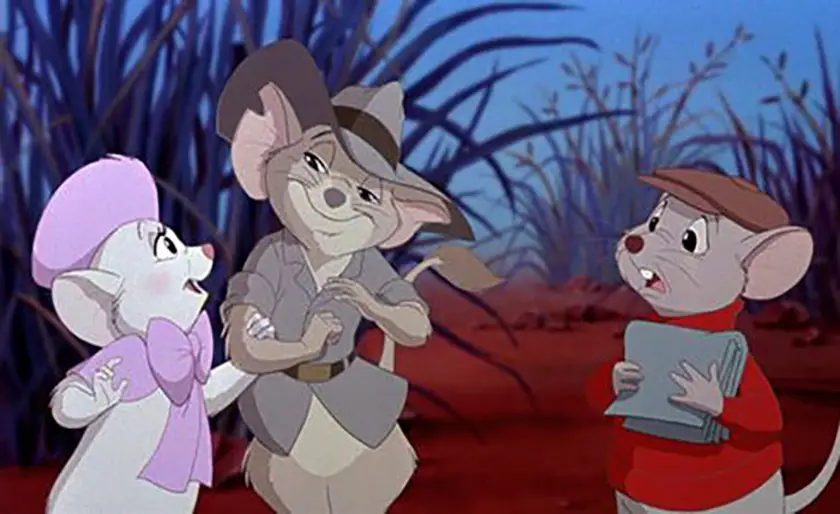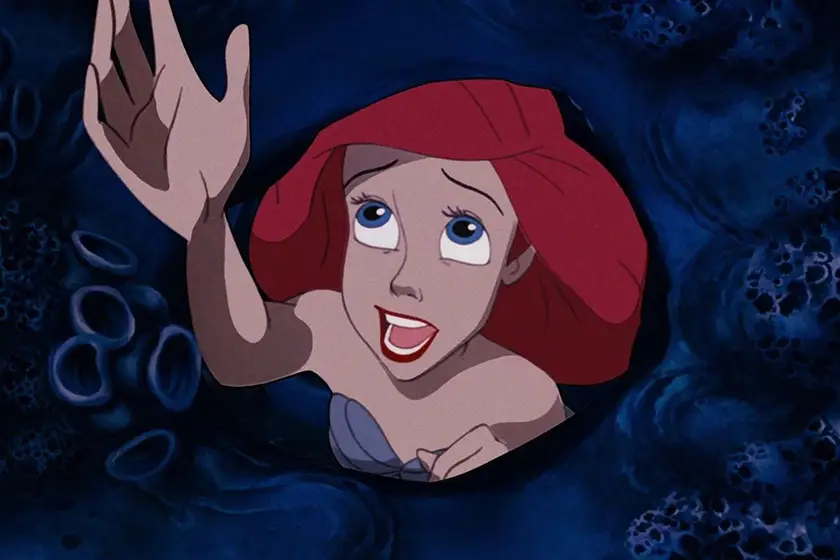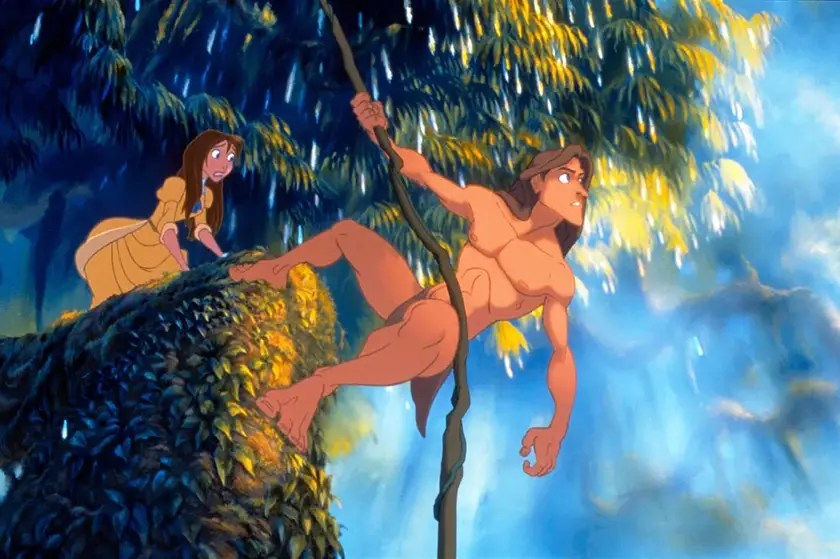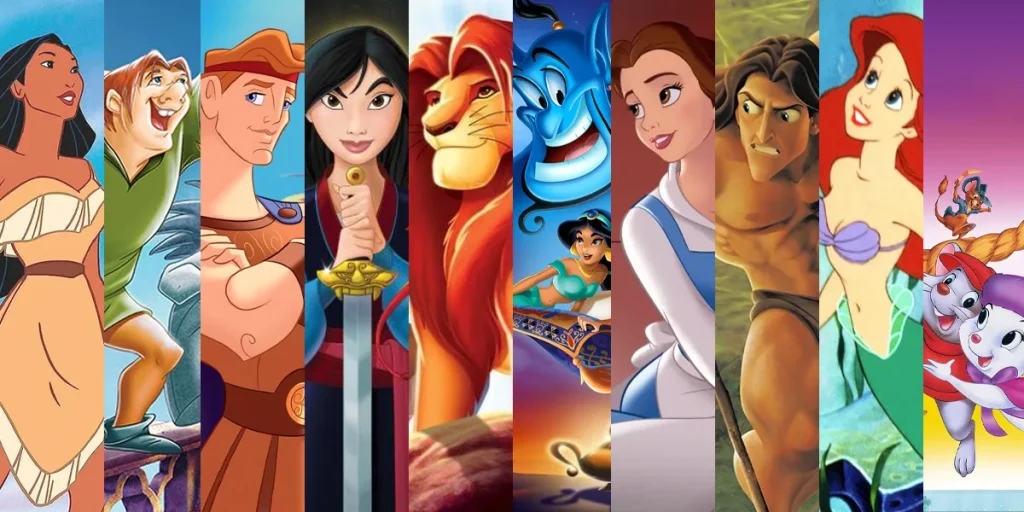The Disney Renaissance Era saw the animation studio operating at its pinnacle. Here we list all those movies, ranked from worst to best.
Walt Disney Animation Studios was founded more than a century ago, and in that time it has overseen the release of over 60 feature-length movies, beginning as far back as 1937 with Snow White and the Seven Dwarfs.
Each film can be categorised into one of several named “eras” that form the history of the animation giant. These eras are unofficial periods of time, some even spanning multiple decades, that have come to define the varying phases of Walt Disney Animation. They range from the Golden Age, which began with Snow White, to the modern Revival Era, which is where we are currently.
The Renaissance Era (1989-1999) is often regarded as the pinnacle of Disney animation. Containing ten movies, all hand-drawn and many of which were met with critical acclaim and commercial success, the Renaissance Era launched Disney into the stratosphere and saw the formation of several competing animation studios who wanted in on Disney’s success. Here’s our list of all 10 movies that make up the Renaissance Era, ranked from worst to best.
10. Pocahontas (1995)

It was certainly a dubious choice to take the life experiences of one of the most famous Native American women and, instead of telling her tale with accuracy in mind, choosing to force a star-crossed love story into the muddy waters of British colonialism. Pocahontas was a real person, but Disney’s version details the romanticised relationship between the title character (Irene Bedard) and John Smith (Mel Gibson), a rare Jamestown settler who doesn’t distrust the Natives, and whose romance with Pocahontas blossoms as their two worlds collide with violence ever-bubbling beneath the surface.
Disney imbued Pocahontas with the same sweeping and enchanting magic that became a staple for the studio during its Golden and Silver eras, when fairy tales made up the bulk of its source material. Pocahontas bursts with vibrant animation, and “Colors of the Wind” is stunningly composed by company stalwart Alan Menken, but too much of the film is suffocated by a distinct lack of humour that derives from the historical background of the piece. This is no fairytale, and the decision to neither commit to historical accuracy nor embrace fantastical childlike whimsy fails the young minds watching and denies the subject of the movie true cinematic justice.
9. The Rescuers Down Under (1990)

Of the many Disney hits from the ‘50s, ‘60s and ‘70s, it’s curious that the film cemented in the history books as the first to receive a sequel would be 1977’s The Rescuers. It would take just 13 years for Bernard (Bob Newhart) and Bianca (Eva Gabor), two mice working on behalf of the Rescue Aid Society, to undergo their next big mission, this time journeying to the Australian outback to rescue a young boy and his endangered golden eagle companion from the clutches of a menacing poacher.
Interestingly, The Rescuers Down Under is the only movie released during the Renaissance Era not to feature any musical number performed by its characters (“Trashin’ the Camp” from Tarzan absolutely counts) and that proved to be a refreshing change of pace. Not concerned with elaborate musical set pieces, The Rescuers Down Under instead focused on lean storytelling and expressive visuals. Infused within is a keen sense of adventure, but the movie ultimately fails to leave a lasting impact beyond being the first (and, to date, the only) Disney sequel to surpass its predecessor.
8. The Hunchback of Notre Dame (1996)

Sometimes it can be challenging to convey the beauty and majesty of Disney’s animation efforts, as the studio has routinely set the bar so high. The Hunchback of Notre Dame, however, is a stunning visual rendition of medieval Paris. Hunchback tracks the emotional journey of Quasimodo (Tom Hulce), a deformed bell-ringer confined to live inside Notre Dame cathedral, who dreams of being accepted and allowed to explore the world outside his holy domicile.
Hunchback is a dark film, and far more mature than your typical made-for-kids Disney fare. It deals in heavy themes that complement the gorgeous gothic art style, though the musical numbers provide the movie with occasional uplifting sequences of levity. Between the committed acting performances and a lead character that tugs at the heartstrings, the movie makes an impact, though one key choice made as the film concludes rings as more curious than emotionally or thematically satisfying.
7. Mulan (1998)
Mulan is known as a feminist film that challenges traditional gender roles, and it’s respected for its rich animation, motivational music and how it explores themes of familial duty and honour, but it should be championed most for featuring the single most emotionally impactful moment in more than a century of Disney Animation. We’re referring to the critical hard cut that leads out of “A Girl Worth Fighting For” into a stark image of a burned-out village, fallen victim to a Hunnic raid. It’s a devastating gut punch of a transition and one of the strongest shot choices in the annals of animation history.
Beyond that, Mulan is revered for its colourful animation, its compelling characters and what it ultimately has to say about warfare and the outdated practice of forbidding women from operating in any capacity outside of their perceived gender responsibilities. Mulan (Ming-Na Wen) is an excellent character; she frequently shows the kind of mental fortitude that makes her a feminist trailblazer, but she isn’t a male stand-in either — she’s a woman who breaks the law simply to protect her ailing father, masquerading as a man to serve her country in his stead. Unfortunately, the movie Mulan isn’t quite able to measure up to the stature of its titular subject, but it has retained cultural staying power over the decades regardless.
6. Hercules (1997)

Putting aside the intensely grating exhibition of willful ignorance on Disney’s behalf, which opted to use the lead character’s Roman name instead of his Greek name (Heracles) despite the film taking place to the East of the Ionian Sea, Hercules is an explosion of bright colour and infectious energy. Featuring perhaps one of the strongest voice casts from Disney’s rich library of animated classics, Hercules is a swiftly paced character showcase, and another strong calling card that details the quality of animated output for the studio during the ‘90s.
Greek mythology is an area of classical antiquity rife with narrative potential, and Hercules dutifully captures the exuberance of Renaissance Disney basking in its ability to effectively fuse comedy, colourful imagery and cheerful musical numbers. Hercules shoulders the weight of expectation like mighty Atlas, striking down with bursts of whimsical, fun-for-all-ages entertainment as the thunderbolts of Zeus. James Woods just about steals the film as the scenery-chewing Hades, who plots the downfall of Hercules (Tate Donovan) and sets the entire film’s events in motion, but in truth, he’s supported by a technical collaboration of Herculean proportions, with acting talent uniting and pairing well with vibrant visual storytelling.
5. The Little Mermaid (1989)

When The Little Mermaid debuted in 1989, it made an extraordinary impact; not only was it an enormously impressive feat of animation and animated musical composition, but it also launched the Renaissance Era with a triumphant splash. Loosely based on the Hans Christian Andersen fairy tale, The Little Mermaid is a richly compelling piece that sings most prosperously when it focuses on the father-daughter dynamic between Ariel (Jodi Benson) and Triton (Kenneth Mars) – the former being our protagonist, a kind-hearted mermaid with a deep-seeded fascination with the surface world, and the latter being her father, the king of Atlantis, who despises humans and lashes out while trying to protect his progeny.
The Little Mermaid is both musically and visually enchanting, delivering a warm sense of whimsy that feels quintessentially Disney. It boasts quite possibly the most appealing and well-rounded supporting companions for our protagonist in Caribbean crab Sebastian (Samuel E. Wright), angelfish Flounder (Jason Marin) and seagull Scuttle (Buddy Hackett), and Ursula (Pat Carroll) remains a top-tier villain in the pantheon of animated antagonists. Though slightly overshadowed by the Renaissance greats that would follow, The Little Mermaid persists as a stone-cold classic that marked a high point for ’80s animation, and it subsequently ushered in a new era, both for Disney and for the wider American animation market, that would revolutionise the medium for audiences of all ages.
4. Beauty and the Beast (1991)

Famously, Walt Disney’s favourite scene from his catalogue of animation greats came in Cinderella; specifically, the moment when magic spun the title character a new dress, completing her rags-to-riches transformation. If he’d lived to witness Beauty and the Beast, there’s every chance the ballroom dance sequence might’ve stolen that crown, such is the enchanting beauty of a film about a bookworm village girl falling in love with a secret prince cursed to take the form of a hideous beast.
Beauty and the Beast is a timeless work of art that boasts wonderful musical numbers, exquisite art design and a central sweeping romance that’s nothing less than touching. It’s a magical film, not defined by its gorgeous colour palette or the amusingly eccentric side characters but by its titular pairing, and the push-and-pull of their magnetic relationship. The film shines as a cautionary tale, warning against the perils of judging someone by their physical appearance, while also positing that those with tough exteriors can be prone to change. Beauty and the Beast is a thematically and narratively triumphant amalgamation of humour, heart and sorrow, gorgeously brought to life by a studio at the height of its power.
3. Tarzan (1999)

Despite some heavy competition, Tarzan is without a doubt the absolute pinnacle of Disney’s musical accomplishments. Phil Collins‘ musical talents are as intrinsically connected to this adaptation of Edgar Rice Burroughs’ most famous character as any of the characters themselves; his songs breathe life into the film, setting the various moods seamlessly through emotional hardships and spirited injections of infectious energy. Tarzan tells the tale of an orphan boy raised by gorillas to become a jungle man with ambition and visual vibrancy, further revolutionising animation as a progressive art form.
Tarzan is an often under-appreciated Renaissance Era classic that should be heralded for moving the needle for Disney; Tarzan boasts excellent voice acting performances from an ensemble cast, a swiftly paced plot that draws our attention and takes us on an emotional journey of self-discovery, and rich characters, both human and not, that are never any less that compelling. Let’s also not forget Sabor (Frank Welker), the vicious leopard who killed Tarzan’s family, who’s comfortably one of the most memorable and frightening supporting villains from the company vault. Combine all that with top-notch animation and a soundtrack beyond reproach, and you have a rip-roaring adventure film that’s fun for audiences of all ages.
2. Aladdin (1992)
There’s barely a moment within Aladdin where we don’t feel the presence of unadulterated cinematic magic; the movie exudes it from every pore, wrapping us up in a sweeping story of romance, friendship and the importance of self-belief that lands with as much impact now as it did more than three decades ago. Plaudits are routinely awarded to the cast of characters and the genius voice actors who give them life, but there’s an unquantifiable storytelling majesty to Aladdin that trumps even the whimsical music and the dazzling animation.
Aladdin infuses delightful comedy into its story about a peasant boy falling for a princess. It layers the emotional drama through thrilling set pieces and an antagonist we love to loathe, and the romantic beats are as hypnotising as Jafar’s (Jonathan Freeman) snake-charmer staff. It’s a harmonious convergence of humour, heart and hit songs that coalesce seamlessly, supported most notably by a pure virtuoso performance from the late, great Robin Williams. In any other world, Aladdin would be a deserving crowning jewel for Disney, not just of its era but of any era in the company’s history; however, in our list, it comes in close second as a truly special runner-up.
1. The Lion King

It’s challenging to break down what makes The Lion King special without simply throwing around superlatives, such is the strength of Disney’s animal kingdom translation of William Shakespeare’s “Hamlet”. It gets everything right; from the masterful storytelling and well-rounded characters to the animation, the voice acting, the music and the moving emotional stakes. The Lion King is a technical showcase — a stylistic exhibition with a timeless coming-of-age story, and thematic depth that shines ever so brightly.
The Lion King is a morality tale of the highest order that should be considered essential viewing, particularly for children as they grow and mature but also for adult viewers. We follow Simba (Matthew Broderick), a young lion cub banished from his pride following an accidental death who must overcome his guilt and return to avenge his family. It’s a flawless film so impressive it makes all its contemporaries seem less so by comparison; they say movies made by committee always falter, but it took as many as 20 credited writers to create this masterpiece. Disney never before or since managed to so perfectly sculpt an animated movie like The Lion King, a true cinematic gem that continues to thrill, entertain and inspire.

